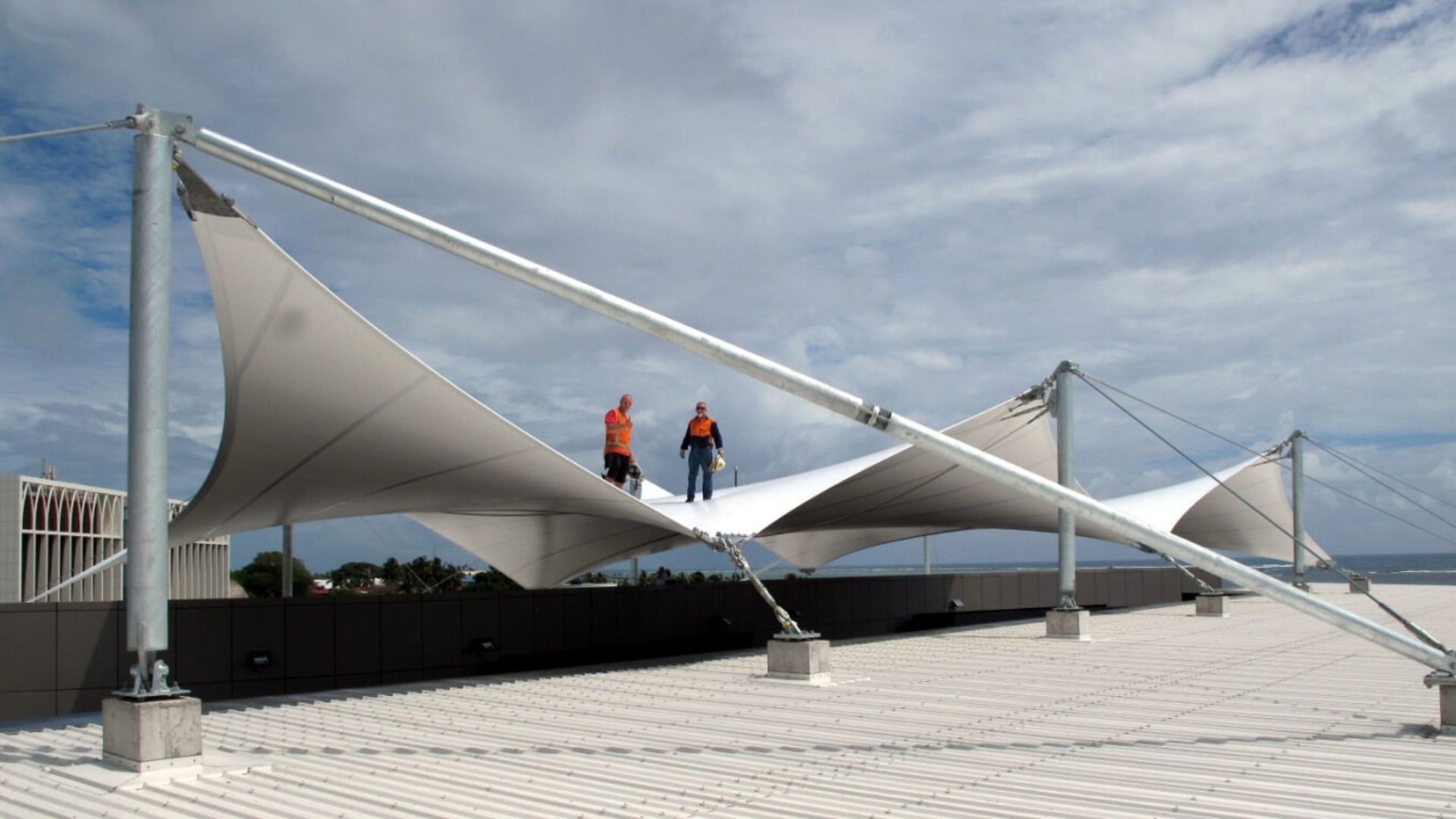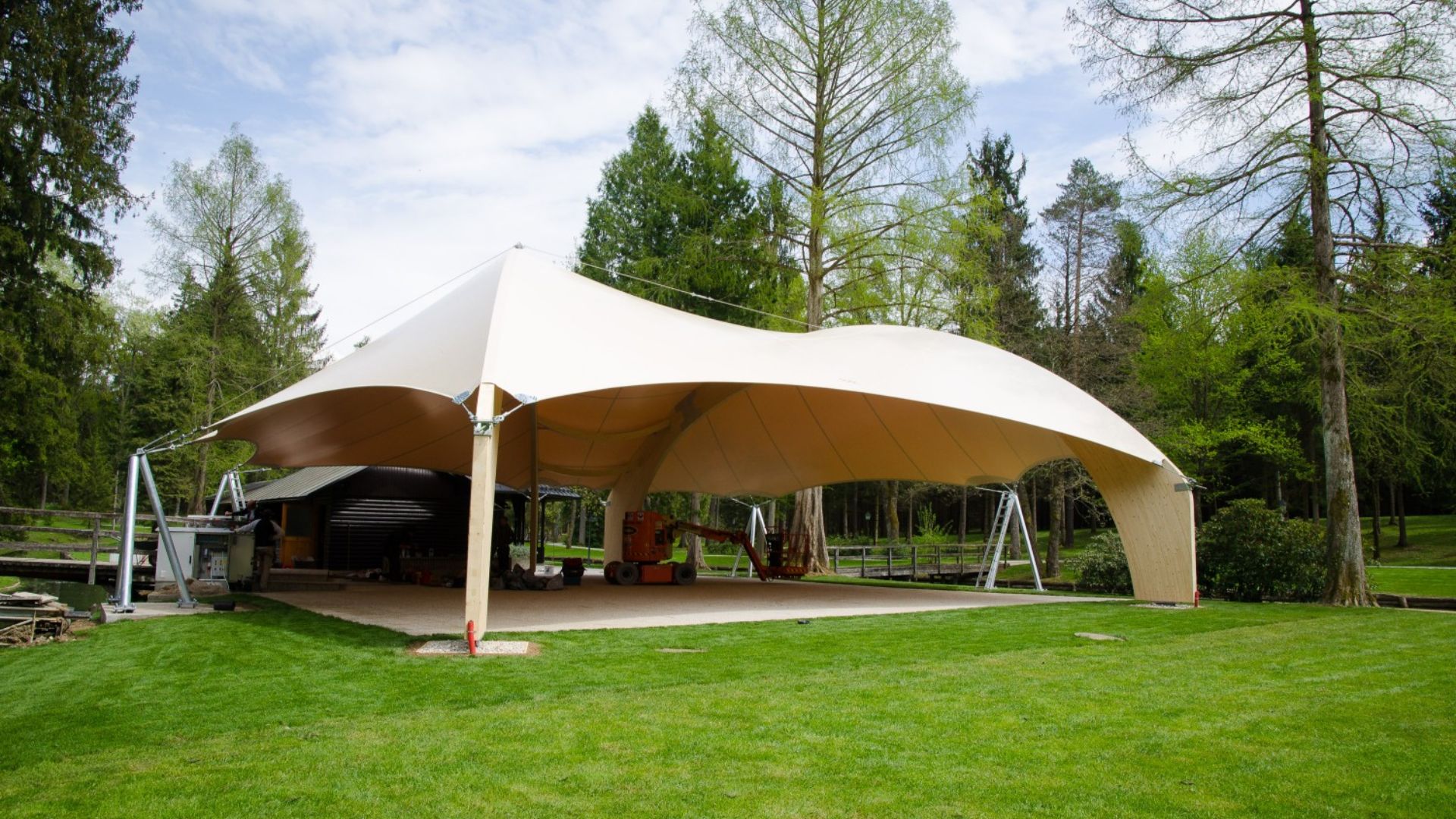Tensile fabric structures are innovative architectural solutions known for their aesthetic appeal and practical advantages. These structures utilize tensioned fabrics, typically supported by a steel or cable framework, to create versatile and durable coverings. From sports arenas and exhibition halls to outdoor canopies and walkways, Tensile Fabric Structures UAE offer a range of benefits that make them a popular choice for various applications.

-
Aesthetic Appeal
One of the most significant advantages of tensile fabric structures is their striking visual impact. The ability to create fluid, organic shapes that are not possible with traditional building materials gives architects and designers a powerful tool for creating iconic structures. The translucency of the fabric allows for unique lighting effects, enhancing the ambiance of the space both during the day and at night. The variety of colors, textures, and forms available means that each structure can be tailored to meet specific design requirements, ensuring a unique and visually captivating result.
-
Flexibility in Design
Tensile fabric structures offer unparalleled flexibility in design. The lightweight nature of the fabric allows for expansive, column-free spaces, providing greater freedom in how the interior space is utilized. This flexibility makes them ideal for large venues such as stadiums, concert halls, and exhibition centers. Additionally, the modular nature of these structures means they can be easily expanded or reconfigured as needs change, offering a level of adaptability that is difficult to achieve with more rigid building materials.
-
Durability and Strength
Despite their lightweight appearance, tensile fabric structures are incredibly durable and strong. Modern tensile fabrics are designed to withstand extreme weather conditions, including high winds, heavy rain, and snow loads. They are also resistant to UV radiation, mold, and mildew, ensuring a long lifespan with minimal maintenance. The strength of the fabric, combined with the supporting framework, provides a stable and secure structure that can last for decades.
-
Cost-Effectiveness
Cost-effectiveness is another key benefit of tensile fabric structures. The materials and construction methods used are typically less expensive than those required for traditional building structures. The reduced weight of the materials means that the supporting framework can also be lighter and less costly. Additionally, the speed of construction is significantly faster, reducing labor costs and minimizing disruption to surrounding areas. The long-term maintenance costs are also lower, as the materials used are highly durable and require minimal upkeep.
-
Energy Efficiency
Tensile fabric structures contribute to energy efficiency in several ways. The fabric’s translucency allows natural light to penetrate the structure, reducing the need for artificial lighting during the day. This not only lowers energy consumption but also creates a more pleasant and natural indoor environment. Some tensile fabrics are also designed to reflect solar radiation, helping to keep the interior cool and reducing the need for air conditioning. The combination of these factors results in a structure that is both environmentally friendly and cost-efficient to operate.
-
Sustainability
Sustainability is increasingly important in modern construction, and tensile fabric structures excel in this area. The materials used are often recyclable, and the lightweight nature of the structures means that they require fewer resources to produce and transport. The long lifespan and low maintenance requirements further enhance their sustainability credentials. Additionally, the energy efficiency of these structures reduces their overall carbon footprint, making them an environmentally responsible choice.
-
Versatility
The versatility of tensile fabric structures makes them suitable for a wide range of applications. They can be used for temporary installations such as event tents and exhibition pavilions, as well as permanent structures like sports arenas, airports, and shopping centers. Their adaptability means they can be used in various climates and environments, from hot deserts to cold mountainous regions. This versatility ensures that tensile fabric structures can meet the diverse needs of different projects and clients.

Tensile fabric structures offer numerous benefits that make them an attractive option for a wide range of architectural and construction projects. Their aesthetic appeal, design flexibility, durability, cost-effectiveness, energy efficiency, sustainability, and versatility make them a smart choice for modern construction. As the demand for innovative and sustainable building solutions continues to grow, tensile fabric structures are likely to play an increasingly important role in the future of architecture.

